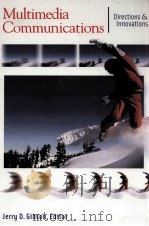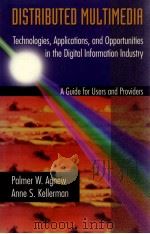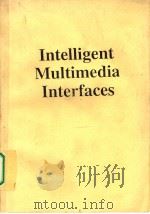《DSP FIRST:A MULTIMEDIA APPROACH》
| 作者 | JAMES H.MCCLELLAN,RONALD W.SCH 编者 |
|---|---|
| 出版 | PRNETICE HALL |
| 参考页数 | 524 |
| 出版时间 | 1998(求助前请核对) 目录预览 |
| ISBN号 | 0132431718 — 求助条款 |
| PDF编号 | 813593708(仅供预览,未存储实际文件) |
| 求助格式 | 扫描PDF(若分多册发行,每次仅能受理1册) |
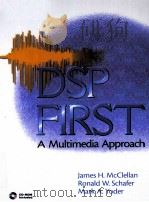
1 Introduction1
1.1 Mathematical Representation of Signals2
1.2 Mathematical Representation of Systems5
1.3 Thinking About Systems7
1.4 The Next Step8
2 Sinusoids9
2.1 An Experiment with a Tuning Fork10
2.2 Review of Sine and Cosine Functions12
2.3 Sinusoidal Signals15
2.3.1 Relation of Frequency to Period16
2.3.2 Relation of Phase Shift to Time Shift17
2.4 Sampling and Plotting Sinusoids20
2.5 Complex Exponentials and Phasors23
2.5.1 Review of Complex Numbers23
2.5.2 Complex Exponential Signals25
2.5.3 The Rotating Phasor Interpretation26
2.5.4 Inverse Euler Formulas29
2.6 Phasor Addition31
2.6.1 Addition of Complex Numbers32
2.6.2 Phasor Addition Rule32
2.6.3 Phasor Addition Rule: Example34
2.6.4 MATLAB Demo of Phasors35
2.6.5 Summary of the Phasor Addition Rule36
2.7 Physics of the Tuning Fork37
2.7.1 Equations from Laws of Physics37
2.7.2 General Solution to the Differential Equation40
2.7.3 Listening to Tones41
2.8 Time Signals: More Than Formulas41
2.9 Summary and Links42
Problems43
3 Spectrum Representation48
3.1 The Spectrum of a Sum of Sinusoids48
3.1.1 Graphical Plot of the Spectrum50
3.2 Beat Notes51
3.2.1 Multiplication of Sinusoids52
3.2.2 Beat Note Waveform52
3.2.3 Amplitude Modulation54
3.3 Periodic Waveforms57
3.3.1 Synthetic Vowel58
3.4 More Periodic Signals62
3.4.1 Fourier Series: Analysis62
3.4.2 The Square Wave63
3.4.3 Triangle Wave64
3.4.4 Example of a Non-periodic Signal65
3.5 Time-Frequency Spectrum68
3.5.1 Stepped Frequency71
3.5.2 Spectrogram Analysis72
3.6 Frequency Modulation: Chirp Signals73
3.6.1 Chirp, or Linearly Swept Frequency73
3.6.2 A Closer Look at Instantaneous Frequency75
3.7 Summary and Links77
Problems78
4 Sampling and Aliasing83
4.1 Sampling83
4.1.1 Sampling Sinusoidal Signals85
4.1.2 The Sampling Theorem87
4.1.3 Aliasing88
4.1.4 Folding89
4.2 Spectrum View of Sampling90
4.2.1 Over-Sampling90
4.2.2 Aliasing Due to Under-Sampling92
4.2.3 Folding Due to Under-Sampling93
4.2.4 Maximum Reconstructed Frequency94
4.3 Strobe Demonstration94
4.3.1 Spectrum Interpretation99
4.4 Discrete-to-Continuous Conversion100
4.4.1 Alias Frequencies Due to Sampling101
4.4.2 Interpolation with Pulses102
4.4.3 Zero-Order Hold Interpolation103
4.4.4 Linear Interpolation104
4.4.5 Parabolic Interpolation105
4.4.6 Over-Sampling Aids Interpolation106
4.4.7 Ideal Bandlimited Interpolation107
4.5 The Sampling Theorem109
4.6 Summary and Links111
Problems112
5 FIR Filters119
5.1 Discrete-Time Systems119
5.2 The Running Average Filter121
5.3 The General FIR Filter124
5.3.1 An Illustration of FIR Filtering125
5.3.2 The Unit Impulse Response127
5.3.2.1 Unit Impulse Sequence128
5.3.2.2 Unit Impulse Response Sequence129
5.3.2.3 The Unit-Delay System130
5.3.3 Convolution and FIR Filters131
5.3.3.1 Computing the Output of a Convolution131
5.3.3.2 Convolution in MATLAB133
5.4 Implementation of FIR Filters133
5.4.1 Building Blocks134
5.4.1.1 Multiplier134
5.4.1.2 Adder134
5.4.1.3 Unit Delay135
5.4.2 Block Diagrams135
5.4.2.1 Other Block Diagrams136
5.4.2.2 Internal Hardware Details137
5.5 Linear Time-Invariant (LTI) Systems138
5.5.1 Time Invariance139
5.5.2 Linearity140
5.5.3 The FIR Case141
5.6 Convolution and LTI Systems142
5.6.1 Derivation of the Convolution Sum142
5.6.2 Some Properties of LTI Systems144
5.6.2.1 Convolution as an Operator144
5.6.2.2 Commutative Property of Convolution145
5.6.2.3 Associative Property of Convolution146
5.7 Cascaded LTI Systems146
5.8 Example of FIR Filtering149
5.9 Summary and Links152
Problems152
6 Frequency Response of FIR Filters157
6.1 Sinusoidal Response of FIR Systems157
6.2 Superposition and the Frequency Response160
6.3 Steady State and Transient Response164
6.4 Properties of the Frequency Response166
6.4.1 Relation to Impulse Response and Difference Equation166
6.4.2 Periodicity of H(w)168
6.4.3 Conjugate Symmetry168
6.5 Graphical Representation of the Frequency Response169
6.5.1 Delay System170
6.5.2 First Difference System170
6.5.3 A Simple Lowpass Filter174
6.6 Cascaded LTI Systems176
6.7 Running-Average Filtering179
6.7.1 Plotting the Frequency Response180
6.7.2 Cascade of Magnitude and Phase184
6.7.3 Experiment: Smoothing an Image184
6.8 Filtering Sampled Continuous-Time Signals188
6.8.1 Example: Low-Pass Averager190
6.8.2 Interpretation of Delay192
6.9 Summary and Links194
Problems195
7 z-Transforms202
7.1 Definition of the z-Transform203
7.2 The z-Transform and Linear Systems205
7.2.1 The z -Transform of an FIR Filter205
7.3 Properties of the z-Transform208
7.3.1 The Superposition Property of the z -Transform208
7.3.2 The Time-Delay Property of the z-Transform209
7.3.3 A General z-Transform Formula210
7.4 The z-Transform as an Operator211
7.4.1 Unit-Delay Operator211
7.4.2 Operator Notation212
7.4.3 Operator Notation in Block Diagrams213
7.5 Convolution and the z-Transform213
7.5.1 Cascading Systems217
7.5.2 Factoring z-Polynomials218
7.5.3 Deconvolution219
7.6 Relationship Between the z-Domain and the w-Domain220
7.6.1 The z-Plane and the Unit Circle221
7.6.2 The Zeros and Poles of H (z)222
7.6.3 Significance of the Zeros of H(z)224
7.6.4 Nulling Filters225
7.6.5 Graphical Relation Between z and w226
7.7 Useful Filters228
7.7.1 The L -Point Running Sum Filter229
7.7.2 A Complex Bandpass Filter231
7.7.3 A Bandpass Filter with Real Coefficients234
7.8 Practical Bandpass Filter Design236
7.9 Properties of Linear Phase Filters239
7.9.1 The Linear Phase Condition239
7.9.2 Locations of the Zeros of FIR Linear Phase Systems241
7.10 Summary and Links242
Problems242
8 IIR Filters249
8.1 The General IIR Difference Equation250
8.2 Time-Domain Response251
8.2.1 Linearity and Time Invariance of IIR Filters254
8.2.2 Impulse Response of a First-Order IIR System254
8.2.3 Response to Finite-Length Inputs256
8.2.4 Step Response of a First-Order Recursive System258
8.3 System Function of an IIR Filter261
8.3.1 The General First-Order Case261
8.3.2 The System Function and Block-Diagram Structures263
8.3.2.1 Direct Form I Structure263
8.3.2.2 Direct Form II Structure264
8.3.2.3 The Transposed Form Structure265
8.3.3 Relation to the Impulse Response267
8.3.4 Summary of the Method268
8.4 Poles and Zeros269
8.4.1 Poles or Zeros at the Origin or Infinity270
8.4.2 Pole Locations and Stability271
8.5 Frequency Response of an IIR Filter272
8.5.1 Frequency Response using MATLaB274
8.5.2 Three-Dimensional Plot of a System Function276
8.6 Three Domains278
8.7 The Inverse z -Transform and Some Applications279
8.7.1 Revisiting the Step Response of a First-Order System280
8.7.2 A General Procedure for Inverse z -Transformation282
8.8 Steady-State Response and Stability285
8.9 Second-Order Filters289
8.9.1 z-transform of Second-Order Filters289
8.9.2 Structures for Second-Order IIR Systems291
8.9.3 Poles and Zeros293
8.9.4 Impulse Response of a Second-Order IIR System295
8.9.4.1 Real Poles296
8.9.5 Complex Poles297
8.10 Frequency Response of Second-Order IIR Filter302
8.10.1 Frequency Response via MATLAB303
8.10.23-dB Bandwidth305
8.10.3 Three-Dimensional Plot of System Functions305
8.11 Example of an IIR Lowpass Filter307
8.12 Summary and Links310
Problems311
9 Spectrum Analysis320
9.1 Introduction and Review321
9.1.1 Review of the Frequency Spectrum321
9.1.2 A Spectrum Analyzer322
9.2 Spectrum Analysis by Filtering324
9.2.1 Frequency Shifting324
9.2.2 Measuring the Average Value325
9.2.3 Channel Filters325
9.3 Spectrum Analysis of Periodic Signals328
9.3.1 Periodic Signals328
9.3.2 Spectrum of a Periodic Signal329
9.3.3 Filtering with a Running Sum331
9.3.4 Spectrum Analysis Using Running-Sum Filtering331
9.3.5 The DFT: Discrete Fourier Transform334
9.3.6 DFT Examples336
9.3.7 The Fast Fourier Transform (FFT)338
9.4 Spectrum Analysis of Sampled Periodic Signals340
9.5 Spectrum Analysis of Nonperiodic Signals343
9.5.1 Spectrum Analysis of Finite-Length Signals344
9.5.2 Frequency Sampling347
9.5.3 Samples of the Frequency Response349
9.5.4 Spectrum Analysis of Continuing Nonperiodic Signals351
9.6 The Spectrogram355
9.6.1 Spectrograms in MATLAB356
9.6.2 Spectrogram of a Sampled Periodic Signal357
9.6.3 Resolution of the Spectrogram359
9.6.3.1 Resolution Experiment360
9.6.4 Spectrogram of a Musical Scale361
9.6.5 Spectrogram of a Speech Signal363
9.7 Filtered Speech368
9.8 The Fast Fourier Transform (FFT)371
9.8.1 Derivation of the FFT371
9.8.1.1 FFT Operation Count373
9.9 Summary and Links374
Problems376
Appendix A Complex Numbers378
A.1 Introduction379
A.2 Notation for Complex Numbers380
A.2.1 Rectangular Form380
A.2.2 Polar Form381
A.2.3 Conversion: Rectangular and Polar381
A.2.4 Difficulty in Second or Third Quadrant383
A.3 Euler's Formula384
A.3.1 Inverse Euler Formulas385
A.4 Algebraic Rules for Complex Numbers385
A.4.1 Exercises388
A.5 Geometric Views of Complex Operations388
A.5.1 Geometric View of Addition389
A.5.2 Geometric View of Subtraction390
A.5.3 Geometric View of Multiplication391
A.5.4 Geometric View of Division391
A.5.5 Geometric View of Inverse392
A.5.6 Geometric View of Conjugate393
A.6 Powers and Roots393
A.6.1 Roots of Unity394
A.6.1.1 Procedure for Finding Multiple Roots395
A.7 Summary and Links397
Problems398
Appendix B Programming in MATLAB399
B.1 MATLAB Help400
B.2 Matrix Operations and Variables400
B.2.1 The Colon Operator401
B.2.2 Matrix and Array Operations401
B.2.2.1 A Review of Matrix Multiplication402
B.2.2.2 Pointwise Array Operations403
B.3 Plots and Graphics403
B.3.1 Figure Windows404
B.3.2 Multiple Plots404
B.3.3 Printing and Saving Graphics405
B.4 Programming Constructs405
B.4.1 MATLAB Built-in Functions406
B.4.2 Program Flow406
B.5 MATLAB Scripts406
B.6 Writing a MATLAB Function407
B.6.1 Creating A Clip Function408
B.6.2 Debugging a MATLAB M-file410
B.7 Programming Tips410
B.7.1 Avoiding Loops411
B.7.2 Repeating Rows or Columns411
B.7.3 Vectorizing Logical Operations412
B.7.4 Creating an Impulse413
B.7.5 The Find Function413
B.7.6 Seek to Vectorize414
B.7.7 Programming Style414
Appendix C Laboratory Projects415
C.1 Laboratory: Introduction to MATLAB417
C.1.1 Overview and Goals417
C.1.2 Warm-up417
C.l.2.1 Basic Commands417
C.l.2.2 MATLAB Array Indexing419
C.l.2.3 MATLAB Script Files419
C.l.2.4 MATLAB Demos420
C.l.2.5 MATLAB Sound421
C.l.2.6 Functions421
C.l.2.7 Vectorization423
C.1.3 Exercises: Using MATLAB423
C.l.3.1 Manipulating Sinusoids with MATLAB424
C.l.4 Lab Review Questions424
C.2 Laboratory: Introduction to Complex Exponentials427
C.2.1 Overview427
C.2.1.1 Complex Numbers in MATLAB427
C.2.1.2 Sinusoid Addition Using Complex Exponentials428
C.2.1.3 Harmonic Sinusoids429
C.2.2 Warm-up429
C.2.2.1 Complex Numbers429
C.2.2.2 Sinusoidal Synthesis with an M-File429
C.2.3 Exercises: Complex Exponentials430
C.2.3.1 Representation of Sinusoids with Complex Exponentials430
C.2.3.2 Verify Addition of Sinusoids Using Complex Exponentials431
C.2.4 Periodic Waveforms432
C.3 Laboratory: Synthesis of Sinusoidal Signals433
C.3.1 Overview433
C.3.2 Warm-up: Music Synthesis433
C.3.2.1 D-to-A Conversion434
C.3.2.2 Theory of Sampling434
C.3.2.3 Piano Keyboard435
C.3.3 Lab: Synthesis of Musical Notes438
C.3.3.1 Spectrogram of the Music439
C.3.3.2 Fur Elise439
C.3.3.3 Musical Tweaks440
C.3.3.4 Programming Tips440
C.3.3.5 Alternative Piece: Jesu, Joy of Man's Desiring441
C.3.3.6 Alternative Piece: Minuet in G441
C.3.3.7 Alternative Piece: Beethoven's Fifth Symphony441
C.3.3.8 Alternative Piece: Twinkle, Twinkle, Little Star442
C.3.4 Sound Evaluation Criteria442
C.4 Laboratory: AM and FM Sinusoidal Signals443
C.4.1 Overview443
C.4.1.1 Amplitude Modulation443
C.4.1.2 Frequency Modulated Signals443
C.4.1.3 Chirp, or Linearly Swept Frequency444
C.4.1.4 Advanced Topic: Spectrograms444
C.4.2 Warm-up445
C.4.2.1 MATLAB Synthesis of Chirp Signals445
C.4.3 Lab A: Chirps and Beats446
C.4.3.1 Synthesize a Chirp446
C.4.3.2 Beat Notes446
C.4.3.3 More on Spectrograms (Optional)447
C.4.4 Lab B: FM Synthesis of Instrument Sounds448
C.4.4.1 Generating the Bell Envelopes449
C.4.4.2 Parameters for the Bell450
C.4.4.3 The Bell Sound451
C.4.4.4 Comments about the Bell452
C.4.5 Woodwinds452
C.4.5.1 Generating the Envelopes for Woodwinds452
C.4.5.2 Scaling the Clarinet Envelopes453
C.4.5.3 Clarinet Envelopes453
C.4.5.4 Parameters for the Clarinet454
C.4.5.5 Experiment with the Clarinet Sound455
C.5 Laboratory: FIR Filtering of Sinusoidal Waveforms456
C.5.1 Overview of Filtering456
C.5.1.1 Frequency Response of FIR Filters457
C.5.2 Warm-up458
C.5.2.1 Frequency Response of the 3-Point Averager458
C.5.3 Lab: FIR Filters459
C.5.3.1 Filtering Cosine Waves459
C.5.3.2 First-Difference Filter460
C.5.3.3 Linearity of the Filter460
C.5.3.4 Time Invariance of the Filter461
C.5.3.5 Cascading Two Systems461
C.6 Laboratory: Filtering Sampled Waveforms463
C.6.1 Overview of Linear Filters463
C.6.2 Warm-up464
C.6.2.1 Properties of Discrete-Time Filters464
C.6.3 Laboratory: Sampling and Filters465
C.6.3.1 Filtering a Stair-Step Signal465
C.6.3.2 Implementation of Five-Point Averager466
C.6.3.3 Implementation of First-Difference System466
C.6.3.4 Implementation of First Cascade (Fig. C.ll)467
C.6.3.5 Implementation of Second Cascade (Fig. C.12)467
C.6.3.6 Comparison of Systems of Figs. C.11 and C.12467
C.6.3.7 Filtering the Speech Waveform467
C.7 Laboratory: Everyday Sinusoidal Signals469
C.7.1 Background469
C.7.1.1 Background A: Telephone Touch Tone Dialing469
C.7.1.2 DTMF Decoding470
C.7.1.3 Background B: Amplitude Modulation (AM)470
C.7.1.4 AM Demodulation472
C.7.1.5 Envelope Detection (Peak Tracking)472
C.7.1.6 LTI filter-based demodulation473
C.7.1.7 Notch Filters for Demodulation473
C.7.2 Warm-up A: DTMF Synthesis474
C.7.2.1 DTMF Dial Function474
C.7.3 Warm-up B: Tone Amplitude Modulation475
C.7.4 Laboratory A: DTMF Decoding475
C.7.4.1 Filter Design475
C.7.4.2 A Scoring Function476
C.7.4.3 DTMF Decode Function477
C.7.4.4 Telephone Numbers478
C.7.5 Laboratory B: AM Waveform Detection478
C.7.6 Optional: Amplitude Modulation with Speech479
C.8 Laboratory: Filtering and Edge Detection of Images481
C.8.1 Overview481
C.8.1.1 Digital Images481
C.8.1.2 Displaying Images481
C.8.1.3 Image Filtering483
C.8.2 Warm-up: Display of Images483
C.8.2.1 Display Test484
C.8.3 Laboratory: Filtering Images484
C.8.3.1 One-Dimensional Filtering484
C.8.3.2 Blurring an Image485
C.8.3.3 More Image Filters486
C.8.3.4 Frequency Content of an Image486
C.8.3.5 The Method of Synthetic Highs488
C.8.3.6 Nonlinear Filters489
C.8.3.7 Edges in an Image489
C.8.3.8 The Slope-Threshold Function490
C.8.3.9 What's Nonlinear about Edge Detection?491
C.9 Laboratory: Sampling and Zooming of Images492
C.9.1 Overview492
C.9.2 Warm-up: Linear Interpolation492
C.9.3 Laboratory: Sampling of Images493
C.9.3.1 Reconstruction of Images494
C.9.3.2 Zooming for an Image495
C.10 Laboratory: The z-, n-, and w-Domains497
C.10.1 Objective497
C.10.2 Warm-up497
C.10.3 Laboratory: Relationships Between z-, n-, and w-domains497
C.10.4 Real Poles498
C.10.5 Complex Poles498
C.10.6 Filter Design499
C.11 Laboratory: Extracting Frequencies of Musical Tones*502++ C.11.1 Overview502
C.11.2 Warm-up: System Components502
C.11.2.1 Spectrogram Computation502
C.11.2.2 Generating the Window504
C.11.2.3 Display the Spectrogram504
C.11.2.4 Finding Peaks504
C.11.3 Design of the Music-Writing System505
C.11.3.1 Block Diagram for the System505
C.11.3.2 Write a Spectrogram Function505
C.11.3.3 Parameters of the Spectrogram506
C.11.3.4 Peak Picking and Editing506
C.11.3.5 Writing the Musical Score507
C.11.4 Testing the Music Extraction Program507
Appendix D About the CD508
Index519
1998《DSP FIRST:A MULTIMEDIA APPROACH》由于是年代较久的资料都绝版了,几乎不可能购买到实物。如果大家为了学习确实需要,可向博主求助其电子版PDF文件(由JAMES H.MCCLELLAN,RONALD W.SCH 1998 PRNETICE HALL 出版的版本) 。对合法合规的求助,我会当即受理并将下载地址发送给你。
高度相关资料
-
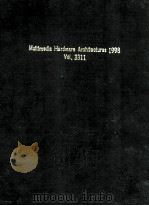
- Multimedia Hardware Architectures 1998
- 1998 SPIE-The International Society for Optical Engineering
-
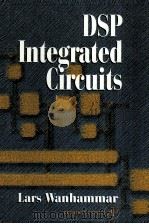
- DSP INTEGRATED CIRCUITS
- 1999 ACADEMIC PRESS
-
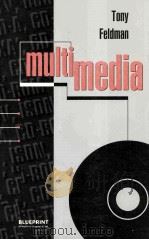
- MULTIMEDIA
- 1994 British Library Board
-
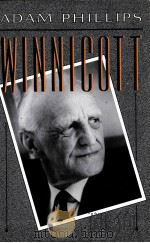
- WINNICOTT
- 1988 HARVARD UNIVERSITY PRESS
-
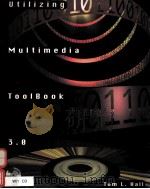
- UTILIZING MULTIMEDIA TOOLBOOK 3.0
- 1996 BOYD & FRASER PUBLISHING COMPANY
-

- THE MULTIMEDIA DICTIONARY
- 1995 ACADEMIC PRESS
-
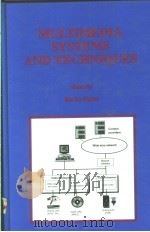
- MULTIMEDIA SYSTEMS AND TECHNIQUES
- 1996 Kluwer Academic Publishers
-
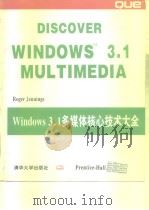
- WINDOWSTM 3.1 MULTIMEDIA
- 1994 清华大学出版社
-

- MULTIMEDIA IN ACTION
- 1995 AP PROFESSIONAL
提示:百度云已更名为百度网盘(百度盘),天翼云盘、微盘下载地址……暂未提供。➥ PDF文字可复制化或转WORD

